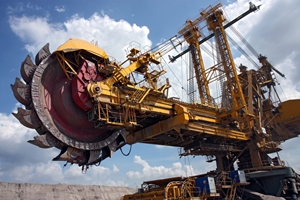If you’re interested in starting a mining apprenticeship in Queensland this year, it could help to understand the trends expected to affect the global industry.
The top 10 trends and issues expected to affect mining companies over the coming year were revealed in the ‘Tracking the Trends 2014’ report released by research organisation Deloitte on January 21.
This report can help mining professionals and organisations stay ahead of the forecast challenges, which is an important factor in sustaining positive growth in the sector.
While not all of these trends are expected to affect Australian mining companies, we’ve outlined three of the most important challenges for Queensland mining below.
Mining productivity falls
The increased cost of doing business in Australia has encouraged companies to cut unnecessary expenses, but Deloitte warns this could impact negatively on productivity.
According to Deloitte the costs of adding capacity to an existing iron ore operation jumped from $100 a tonne in 2007 to $195 per tonne in 2012, while the coal sector was hit even harder.
For thermal coal the costs of adding capacity rose from $61 to $176 per tonne over the same period.
However, companies working to rectify cost imbalances will need to consider how to keep productivity levels from falling. While reducing labour forces and executive compensation can save money in the short term, long term production levels and profits may suffer.
Tackling safety risks
Safety will be a paramount concern in the high-risk mining and resources industry.
Improving occupational health and safety standards is an important challenge for all companies within this sector. Any gains made in these practices can help improve employee well being, productivity and healthcare expenses.
“Beyond resulting in lost production time, investigative costs, reputational damage and regulatory fines, fatal accidents take a huge toll on employee morale and have dire impacts on families and communities,” Deloitte said.
Mining companies will need to examine their traditional processes to identify methods to reach a zero-tolerance approach to workplace injuries and accidents.
Talent gaps
Deloitte estimates that at least one third of the current mining workforce will retire within the next decade.
This will create a significant skills gap which will need to be filled by younger, more qualified workers.
“The pace of worker attrition threatens both operational productivity and the leadership pipeline,” the report stated.
This trend is good news for those considering mining apprenticeships and traineeships in Queensland this year. The growth in demand for young workers should create increased opportunities within these training channels.
By Leanne de Toerkenczy, Public Relations Coordinator

